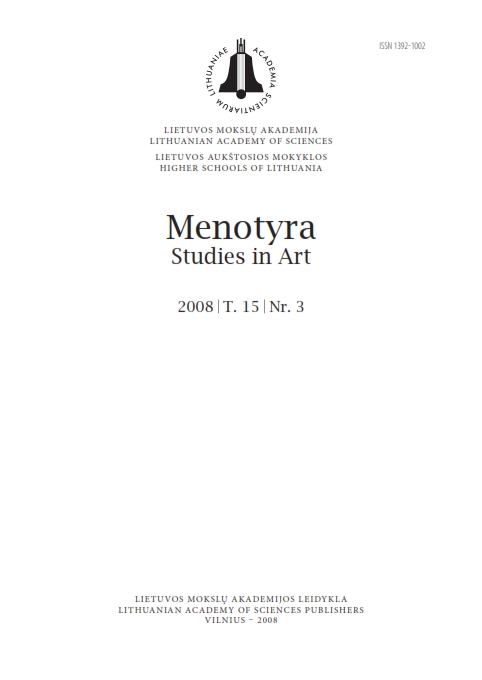Kryžiaus kelias XVIII a. II pusės – XIX a. grafikoje
The Way of the Cross in the graphic arts of the late 18th– 19th centuries
Author(s): Asta GiniūnienėSubject(s): Christian Theology and Religion, Visual Arts, 18th Century, 19th Century
Published by: Lietuvos mokslų akademijos leidykla
Summary/Abstract: In Lithuania, the spread of graphic representations of the Way of the Cross is closely related to the popularity of this kind of devotion. The sources present concise records of the graphic art cycles representing the Passion, which were hanging in churches in the 18th – first half of the 19th century. Most of the sources were found in church documents of Samogitia (Žemaitija) and Northern Highlands (Šiaurės Aukštaitija). Before 1850, the following characteristics of such graphic pictures prevailed: not large, half-arsheen or one arsheen high (arsheen =71.12 cm), coloured carvings, lithographs, most of ten framed and grazed. They were the Passion cycles of various iconography, consisting of 9, 14, 15 stations. Most of them perished. Until the second quarter of the 19th century copper-plates prevailed, some of them were coloured; at present, all are kept in depositories of Lithuanian museums. Worth mentioning are rare cuts of Frehling, a representative of popular graphic art, who worked in Augsburg in the 18th century (Šiauliai, “Aušros” Museum), valuable cycles by M. Engelbrecht, a professional German graphic artist who worked in the baroque style (three incomplete sets have remained), as well as neoclassicist images of the Lord’s Passion by the Italian graphic artist A. Mochetti, printed in the famous Agapito Franzetti’s printing-house in Rome, several Ways of the Cross by unknown authors of the late 18th – early 19 century, solitary stations that have survived. Since the second quarter of the 19th century; cycles of Our Lord’s Passions had been acquired mostly from French and German publishers. They were plates and lithographs of the neo-classicist and romantic styles.In the 19th century, the graphic representation of Way of the Cross, the conception of Our Lord’s Passion and its images were strongly influenced by the Nazarenes’ art. Precise rendition is a feature of the two sets of A. Petrak, a graphic artist who propagated the art of Nazarenes. The sets are dated to 1856; they are carved according to the Viennese St. John Nepomuk church Way of the Cross made by J. Führich and are kept at the Lithuanian Art Museum. Precise accuracy is characteristic also of the Way of the Crossmade by the carver C. Mayer from Nürnberg, the French engraver J. Carot, etc.Throughout the whole 19th century, Lithuania and the other Catholic countries were supplied with devotional paraphernalia mostly by a network of religious art publishers, such as Buasse-Lebel, Dopter, Desgodets, Turgis, etc. from Paris. In Lithuanian churches, the Way of the Cross produced by these publishers appeared in the second half and were spreading through the whole 19th century. In the last decades of the century when new technological possibilities appeared and polygraphy gained variety (chromo-lithography, oleography), massively reproduced prints lost individuality, and standards of representing Our Lord’s Passion have been formed.
Journal: Menotyra
- Issue Year: 15/2008
- Issue No: 3
- Page Range: 8-22
- Page Count: 15
- Language: Lithuanian

